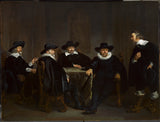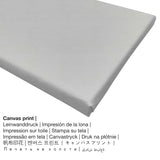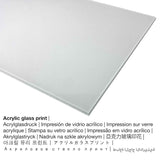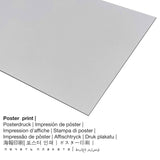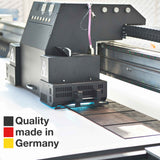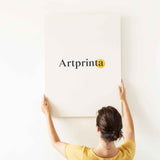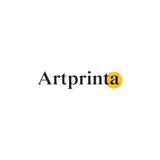Thomas de Keyser, 1638 - Ndị Burgomasters anọ nke Amsterdam mmụta banyere ọbịbịa nke Maria de' Medici na 1 Septemba 1638 - mbipụta nka mara mma.
Ụtụ gụnyere. Mbupu gbakọrọ na ndenye ọpụpụ.
Ozi ndabere na mbipụta nka nke eserese The Four Burgomasters of Amsterdam Learning of the Arrival of Maria de’ Medici on 1 September 1638
Nke a masterpiece aha The Four Burgomasters of Amsterdam Learning of the Arrival of Maria de’ Medici on 1 September 1638 mere site Thomas de Keyser in 1638. Ihe okike izizi tụrụ nha: elu: 28,5 cm obosara: 38 cm | elu: 11,2 n'obosara: 15 inch e tekwara ya na ọkara mmanụ na panel. Besides, the artwork is in the the Mauritshuis's art collection. The nka ochie work of art, which is part of the public domain is provided with courtesy of Mauritshuis, The Hague. Creditline of the artwork: Steven de Leeuw, Amsterdam, 1692; Gerret Braamcamp, Amsterdam, until 1771; Prince William V, The Hague, 1771-1795; confiscated by the French, transferred to the Muséum Central des Arts/Musée Napoléon (Musée du Louvre), Paris, 1795-1815; Royal Picture Gallery, housed in the Prince William V Gallery, The Hague, 1816; transferred to the Mauritshuis, 1822; on long-term loan to the Amsterdam Museum, Amsterdam (inv. no. SB 5755), since 1980. Further, the alignment of the digital reproduction is odida obodo with a side ratio of 4 : 3, which implies that the length is 33% longer than the width. Thomas de Keyser was a architect, painter of Dutch nationality, whose art style can be classified as Baroque. The painter lived for a total of 71 afọ, amuru na 1596 and deceased in 1667 in Amsterdam, North Holland, Netherlands.
Họrọ ihe gị
Maka mbipụta nka ọ bụla dị mma anyị na-enye ihe dị iche iche & nha dị iche iche. N'ihi ya, anyị na-enye gị ohere ịhọrọ n'ime nhọrọ ndị a:
- Aluminom dibond mbipụta (ọla): Aluminium Dibond prints are metal prints with an outstanding effect of depth. A non-reflective surface structure creates a modern impression. For the Aluminium Dibond option, we print the chosen work of art on the aluminium composite surface. The white and bright parts of the original work of art shimmer with a silky gloss but without glare. The print on aluminium is one of the most popular entry-level products and is an extremely contemporary way to showcase art reproductions, since it puts 100% of the viewer’s attention on the replica of the artwork.
- Mbipụta kwaaji: The printed canvas material mounted on a wooden frame. Your canvas print of your favorite artwork will let you turn your art print into a large work of art as you would see in a gallery. Canvas Prints have the advantage of being low in weight, which implies that it is easy to hang the Canvas print without extra wall-mounts. A canvas print is suitable for any kind of wall.
- Mbipụta enyo acrylic: A glossy print on acrylic glass, often named a UV print on plexiglass, makes your chosen original into amazing wall decoration and is a good alternative option to aluminium and canvas fine art replicas. The real glass coating protects your selected art replica against light and external influences for many decades.
- Poster (akwa akwa akwa): A poster print is a UV printed cotton canvas with a nice surface texture. Please keep in mind, that depending on the absolute size of the poster we add a white margin of approximately 2 - 6cm around the artwork, which facilitates the framing.
Ozi dị mkpa: We try our utmost in order to describe the art products in as much detail as possible and to exhibit them visually. However, the pigments of the print materials, as well as the printing can differ slightly from the presentation on your monitor. Depending on your screen settings and the condition of the surface, colors can unfortunately not be printed one hundret percent realistically. In view of the fact that the fine art prints are printed and processed manually, there might as well be slight differences in the motif's exact position and the size.
Ngwaahịa a
| Ụdị ngwaahịa: | ezi nka mmeputakwa |
| Mmeputakwa: | dijitalụ mmeputakwa |
| Usoro mmepụta: | Mbipụta UV ozugbo |
| Nlụpụta: | German mere |
| Stockdị ngwaahịa: | mmepụta ihe na-achọ |
| A na-atụ aro iji ngwaahịa eme ihe: | nchịkọta nka (mmeputakwa), mma mgbidi |
| Nhazi nka nka: | nhazi odida obodo |
| Njikwa oyiyi: | 4: 3 (ogologo: obosara) |
| Nkọwa nha onyonyo: | ogologo bụ 33% ogologo karịa obosara |
| Nhọrọ akụrụngwa: | Mbipụta kwaaji, mbipụta enyo acrylic (nwere ezigbo mkpuchi iko), mbipụta akwụkwọ mmado (akwụkwọ kwaaji), mbipụta ọla (aluminium dibbond) |
| Mbipụta kanvas (akwa akwa na etiti ihe ndọtị) dị iche iche: | 40x30cm - 16x12" |
| Mbipụta iko acrylic (nwere ezigbo mkpuchi iko) dị iche iche: | 40x30cm - 16x12" |
| Ụdị akwụkwọ mmado (akwụkwọ kwaaji) dị iche iche: | 40x30cm - 16x12" |
| Ụdị mbipụta aluminom: | 40x30cm - 16x12" |
| Igwe onyonyo: | adịghị |
Iberibe ozi nka
| Aha nka: | "The Four Burgomasters of Amsterdam Learning of the Arrival of Maria de’ Medici on 1 September 1638" |
| Nhazi: | sere |
| Okwu nche anwụ: | nka ochie |
| Nhazi oge: | 17th narị afọ |
| Emepụtara na: | 1638 |
| Ogologo afọ nka nka: | karịa afọ 380 |
| Ọkara nke ihe osise izizi: | mmanụ na panel |
| Nha ihe osise izizi: | elu: 28,5 cm obosara: 38 cm |
| Ụlọ ihe ngosi nka / ebe: | Maurithuis |
| Ebe ngosi nka: | Hague, South Holland, Netherlands |
| Weebụsaịtị ihe ngosi nka: | www.mauritshuis.nl |
| Ụdị ikike nka: | ngalaba ọha |
| Site n'aka: | Maurithuis, Hague |
| Ebe kredit nke ọrụ nka: | Steven de Leeuw, Amsterdam, 1692; Gerret Braamcamp, Amsterdam, until 1771; Prince William V, The Hague, 1771-1795; confiscated by the French, transferred to the Muséum Central des Arts/Musée Napoléon (Musée du Louvre), Paris, 1795-1815; Royal Picture Gallery, housed in the Prince William V Gallery, The Hague, 1816; transferred to the Mauritshuis, 1822; on long-term loan to the Amsterdam Museum, Amsterdam (inv. no. SB 5755), since 1980 |
Tebụl onye na-ese ihe
| Aha onye nka: | Thomas de Keyser |
| Aliases: | Thomas de Kayser, D. Keyzer, de keyser th., th. de keyser, th. de kayser, de keyser thomas, de Keijser, Th. de Keijser, Thomas Hendricksz. De Keyser, Thomas de Keysler, Keysler, Keyser Thomas de, theodoor de keijser, Keyzer Thomas Hendricksz. de, T. Keyser, Keyser Thomas Hendricksz. de, Keyser, Thomas Keyser, de Keyser, De Keiser, Kyser, Keyzer, de keyser theodor, theodoor de keyser, Théodore Kaiser, thomas des keyser, De Keizer, keyser theodor de, T. de Keyser, Thomas de Keyser, Thomas de Keijser |
| okike nke onye nka: | nwoke |
| Obodo onye nka: | Dutch |
| Ọrụ: | onye na-ese ụkpụrụ ụlọ, onye na-ese ihe |
| Mba onye si: | mba netherland |
| Nkewa onye nka: | nna ukwu ochie |
| Ụdị nke onye na-ese ihe: | Baroque |
| Nwụrụ anwụ: | 71 afọ |
| Afọ ọmụmụ: | 1596 |
| Afọ ọnwụ: | 1667 |
| Nwụrụ na (ebe): | Amsterdam, North Holland, Netherlands |
Nwebiisinka © - Artprinta.com (Artprinta)
Ozi nkowa mgbakwunye na ihe osise izizi sitere na webụsaịtị Maurithuis (© Nwebiisinka - nke Mauritshuis - Maurithuis)
Steven de Leeuw, Amsterdam, 1692; Gerret Braamcamp, Amsterdam, until 1771; Prince William V, The Hague, 1771-1795; confiscated by the French, transferred to the Muséum Central des Arts/Musée Napoléon (Musée du Louvre), Paris, 1795-1815; Royal Picture Gallery, housed in the Prince William V Gallery, The Hague, 1816; transferred to the Mauritshuis, 1822; on long-term loan to the Amsterdam Museum, Amsterdam (inv. no. SB 5755), since 1980

